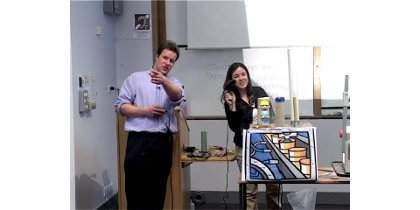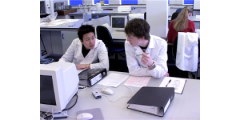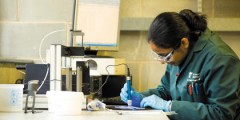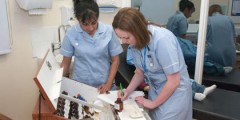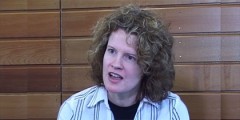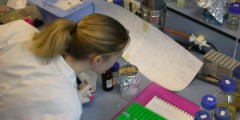Demonstrating principles using activities in lectures
January 31, 2007
Video >> Kate: “The last thing I wanted to ask you about was the demonstrations and bringing that into a classroom. What are the pros and cons of doing something like that, do you think, in terms of for the students and for the lecturer?” Ed: “The con might be that it goes wrong. There …
Classroom management and mobile phones
Video >> Martin Luck: “I think it takes a while to build up an armory of methods for dealing with these situations. How do you deal with a mobile phone when it goes off? How do you deal with late comers? How do you deal with somebody suddenly getting up and going in the middle …
Assessment: in class multiple-choice
Video >> Julian: “If they are making any errors of description then we can talk them through ‘that’s not really the gizzard that’s the ovary’. So talking them through and helping it, at the end of it we get a multiple choice questionnaire which we ask them to complete, based on both the lab and …
“Please turn on your mobile phones” – ubiquitous computing in the classroom
January 30, 2007
Mette Asmild, Andrew Jackson, Benson Lau and Nick Mount: “The adoption of the mobile telephone has revolutionised social and commercial communication in the 21st Century. Whilst it is estimated that the majority of students in British higher-education (HE) use mobile-‘phones and text/SMS-messaging, the learning benefits of adopting and supporting mobile ‘phone text-messaging communication from students …
Development and evaluation of a re-usable learning tool to supplement didactic lectures
January 29, 2007
Jo Leonardi-Bee: “The Division of Epidemiology and Public Health teaches Evidence Based Practice/Medicine (EBPM) to a variety of postgraduate courses. A common theme across these courses is to enable students to put theory from didactic lectures into practice using computer based statistical software packages. However, there are no practical sessions to accompany a particularly difficult …
An inverse method of teaching specialised subjects: decomposing a representative example to sustain analysis and interaction of details
January 16, 2007
Dragos Axinte: “The project discusses an example of teaching specialist manufacturing processes by identifying a ‘representative product’ (RP) from which key manufacturing processes can be isolated, analysed and interconnected to enable the understanding of how complex entities, i.e. products, are generated and made functional. “Teaching specialist manufacturing subjects is nowadays a challenge due to fast …
DysPEL: Dyslexia and Practice Environment Learning in Nursing
March 31, 2006
Fiona McCandless-Sugg, Jo Sanderson-Mann and Heather Wharrad: Background and Overview “Pre-registration Nursing Diploma courses require that 50% of student learning takes place in the classroom and the other 50% is achieved through practice experience in the clinical placement. There is little evidence about how dyslexia affects nurses and student nurses in workplace learning, and what …
Using laboratory classes to teach experimental design
John Harris, Martin Luck and Alan Waterfall: Background “In previous years Animal Physiology students have carried out set laboratory experiments to illustrate the effects of exercise on cardiovascular responses. These were prescriptive laboratory sessions, each resulting in a written report. The teaching team felt that many students were completing these with insufficient thought and without …
The good, the bad and the ugly: students’ experiences of group projects
January 17, 2006
Nicola Gray: “Background: Group projects have the potential to engage a large cohort of students in exercises that complement other aspects of the course. Effective use of resources is an important driver for course organisers. For pharmacy students, the importance of team-working in health care means that these exercises could provide skills to benefit their …
Practical molecular biology for visually impaired students
October 29, 2005
This illustrated report shows the simple adjustments that allow Emily (who has cone-rod dystrophy giving her very little detailed vision but some colour perception) to carry out her own lab work. Each Visually Impaired (VI) student has specific needs but adjustments here may be of use to them. This was originally written in 24 point …

